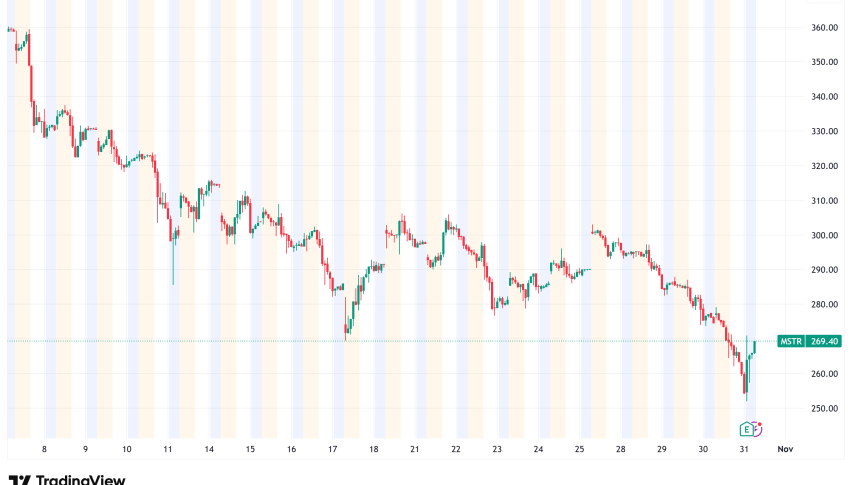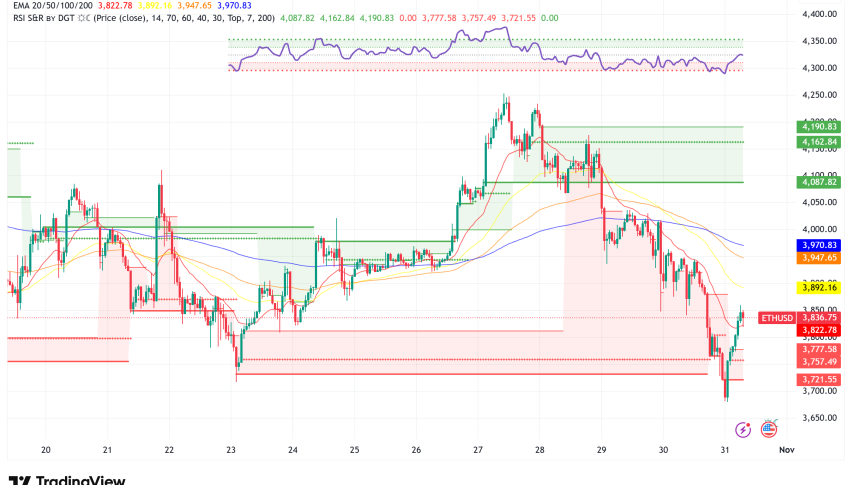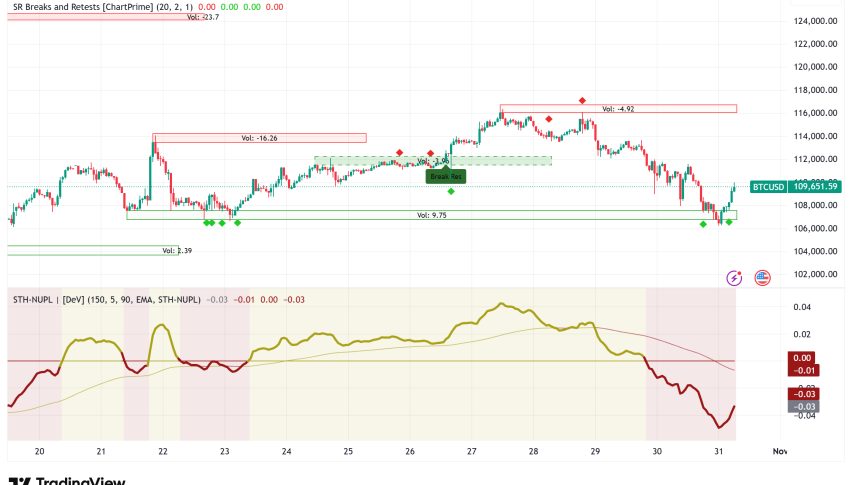Daily Crypto Signals: Bitcoin Slides Below $107K, Ethereum Struggles at $4K Amid Fed Policy Uncertainty
Despite a Federal Reserve rate cut and easing US-China trade tensions, Bitcoin fell below $107,000 while Ethereum continues to oscillate
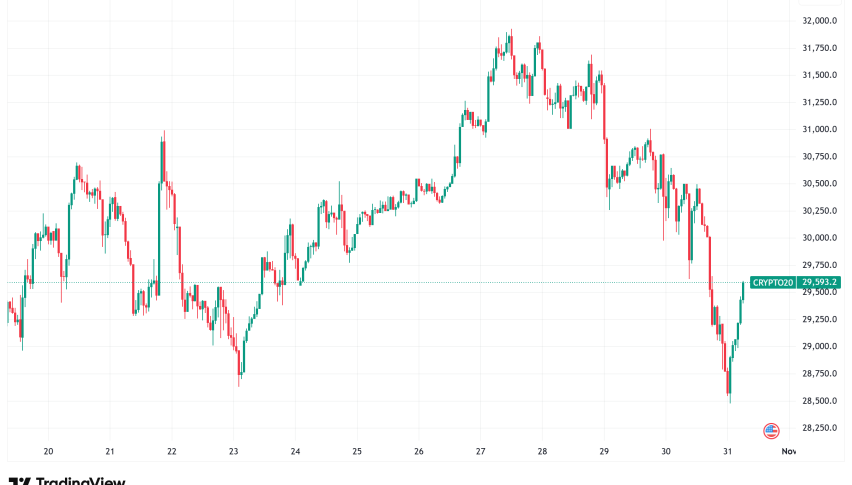
Quick overview
- Bitcoin fell below $107,000 and Ethereum struggles around $4,000, with over $1.1 billion liquidated from crypto markets in just 24 hours.
- Despite a Federal Reserve rate cut and easing US-China trade tensions, macroeconomic uncertainties continue to weigh on investor sentiment.
- US lawmakers are advancing crypto market structure legislation amid a government shutdown, while Standard Chartered predicts tokenized real-world assets could reach $2 trillion by 2028.
- Ethereum's price remains under pressure, with weak on-chain indicators and disappointing ETF flows raising concerns about its growth potential.
Despite a Federal Reserve rate cut and easing US-China trade tensions, Bitcoin BTC/USD fell below $107,000 while Ethereum ETH/USD continues to oscillate around $4,000, with over $1.1 billion liquidated from crypto markets in 24 hours. Lawmakers push forward with crypto market structure legislation amid government shutdown, while Standard Chartered forecasts tokenized real-world assets could reach $2 trillion by 2028.
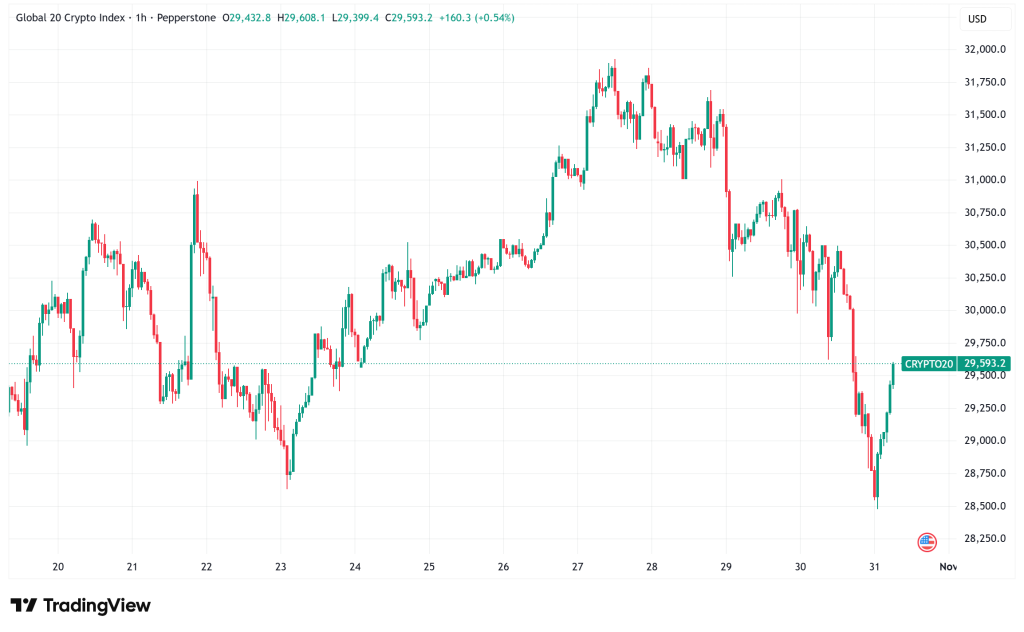
Crypto Market Developments
This week, the bitcoin market was very unstable because of macroeconomic uncertainty that obscured good news. The Federal Reserve’s expected 25 basis point interest rate decrease and announcement of the end of quantitative tightening were good news for investors. However, Federal Reserve Chair Jerome Powell’s cautionary comments at Wednesday’s FOMC press conference made investors less excited. Powell said that committee members had “strongly differing views” about a possible rate drop in December. He also said that more rate cuts are “not a foregone conclusion.”
Even though US President Donald Trump and Chinese President Xi Jinping met in South Korea to try to settle trade issues, the crypto market stayed weak. Trump was hopeful about the relationship between the two countries, and US Treasury Secretary Scott Bessent said that the US will lift limitations on Chinese technology access in exchange for China deferring export controls on rare earth minerals. However, investors were wary of the ongoing economic uncertainties because there wasn’t much information regarding the trade framework.
In terms of regulatory changes, US senators are trying to go forward with crypto market structure legislation even if the government is still shut down. John Boozman, the chair of the Senate Agriculture Committee, said that negotiations between both parties might lead to a measure “very, very soon,” and that they want to enact it before 2026. This comes after the House passed the CLARITY Act during the Republicans’ “crypto week” in July.
Standard Chartered, on the other hand, offered a positive prediction that tokenized real-world assets will have a market valuation of $2 trillion by 2028, which is the same size as the stablecoin market. The investment bank says that $750 billion will go into money-market funds, another $750 billion into tokenized US stocks, and $500 billion into US funds and private equity sectors like commodities, corporate debt, and real estate.
Bitcoin Faces Sell-off Amid Big Tech Q3 Earnings
Traders were dissatisfied with Bitcoin’s price action since they thought it would go up after a number of positive factors came together. During Thursday’s trading session, the leading cryptocurrency fell below its important 200-day exponential moving average around $107,000 and fell to $106,800. This drop caused more than $1.1 billion in liquidations in crypto futures markets in only 24 hours, showing how risky leveraged holdings can be.
The sell-off got worse even though Big Tech companies reported better-than-expected third-quarter earnings. This could be because worries about AI infrastructure spending hurting traditional markets may have spread to crypto. Meta said it will spend $70–72 billion on AI infrastructure, while Alphabet said it would spend up to $93 billion on AI-related capital expenditures. This made investors doubt that the technology sector is too speculative.
Technical analysis shows that Bitcoin is likely to go down even more in the near future. Hyblock’s liquidation heatmap shows that there are immediate liquidity clusters at $103,800 and longer-term support levels at $100,500 and $98,600. Analysts say that the time between the conclusion of quantitative tightening and the start of quantitative easing could put more pressure on prices until the financial sector has more money.
Concerns about Bitcoin’s price going down are growing because it plunged 35% in 2019 after the Federal Reserve stopped its last round of quantitative tightening. Traders who thought the Fed rate decrease, the Trump-China trade deal, and the end of QT would lead to a rebound to range highs are now changing their minds because it looks like the easiest path is still down.
Ethereum Faces Bearish Pressure Under $4,000
Ethereum (ETH) Ethereum has had a hard time keeping its momentum above the $4,000 mark, which is a psychological landmark. After its flash drop below $3,500 on October 11, it has been bouncing about this price point for two weeks. The second-largest cryptocurrency by market value keeps printing red daily candlesticks, and it has failed to break over the $4,000 resistance level several times. This raises worries about whether ETH’s potential for growth this cycle is still there.
Weak on-chain indicators make people even more worried about Ethereum’s short-term future. Over the past week, network fees plummeted by 16%, reaching just $5 million. Active addresses on Ethereum’s foundation layer also declined by 4%. Also, Ether futures are only 5% more expensive than spot markets, which means that there isn’t much demand from leveraged buyers. This is significantly below the 5–10% range that is normal in neutral market conditions.
Ethereum spot ETF flows in the US have also been disappointing, with bearish patterns dominating since mid-October. There were $380 million in net inflows on Monday and Tuesday, but this didn’t create a long-term bullish trend. This has traders wondering if the $10,000 ETH price objective is still possible this cycle. The lack of demand for futures and sluggish ETF flows suggest that institutional investors are not sure what to do.
Ted Pillows, an analyst, said that Ethereum has “lost its $4,000 support level again” and that $3,800 is the next important defense line. If the price drops below this level, it might cause a sell-off toward the $3,500-$3,700 demand zone, where the $3,354 low from August 3 could be tested again. But some analysts say that a drop below $3,300 would be a respectable retracement in the larger uptrend. Bulls would need to recapture the 50-day simple moving average at $4,200 to validate the next leg up.
- Check out our free forex signals
- Follow the top economic events on FX Leaders economic calendar
- Trade better, discover more Forex Trading Strategies
- Open a FREE Trading Account
